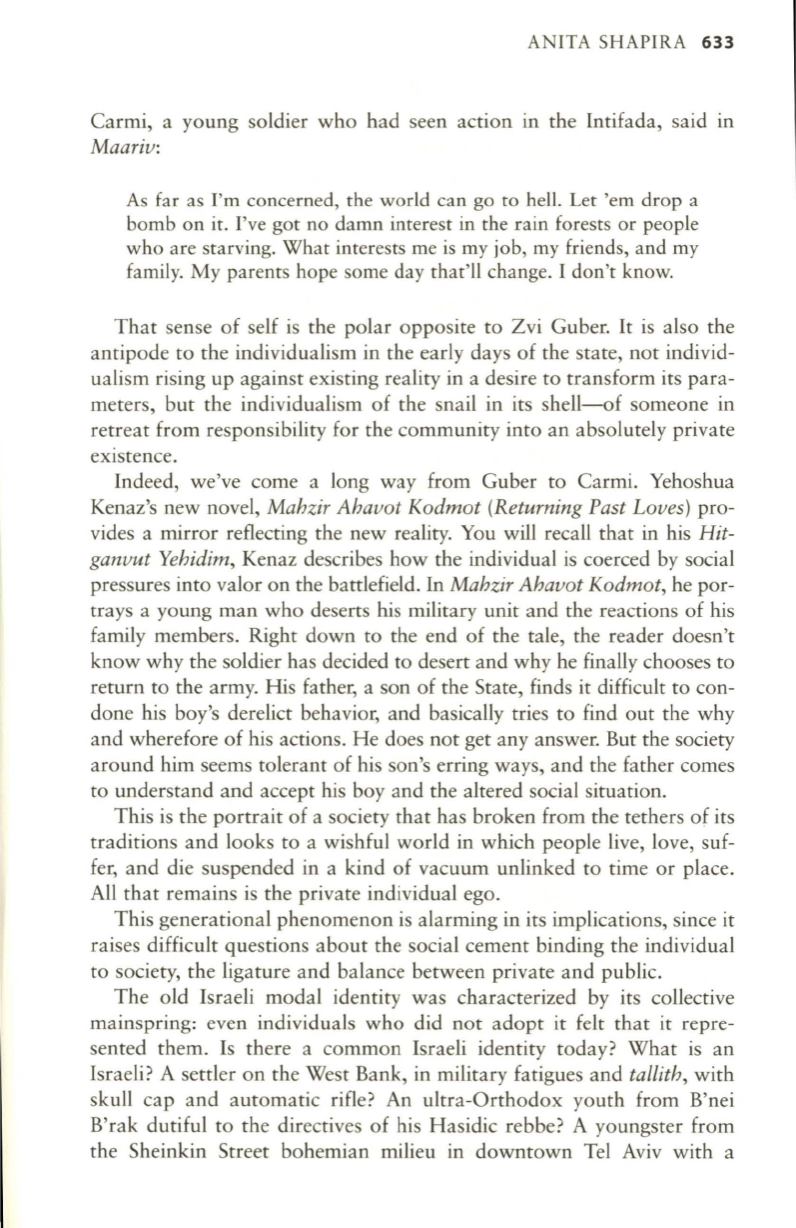
ANITA SHAPIRA
633
Carmi, a young soldier who had seen action in the Intifada, said
tn
Maariv:
As far as I'm concerned, the world can go to hell. Let 'em drop a
bomb on it. I've got no damn interest in the rain forests or people
who are starving. What interests me is my job, my friends, and my
family. My parents hope some day that'll change. I don't know.
That sense of self is the polar opposite to Zvi Guber.
It
is also the
antipode to the individualism in the early days of the state, not individ–
ualism rising up against existing reality in a desire to transform its para–
meters, but the individualism of the snail in its shell-of someone in
retreat from responsibility for the community into an absolutely private
existence.
Indeed, we've come a long way from Guber to Carmi. Yehoshua
Kenaz's new novel,
Mahzir Ahavot Kodmot (Returning Past Loves)
pro–
vides a mirror reflecting the new reality. You will recall that in his
Hit–
ganvut Yehidim,
Kenaz describes how the individual is coerced by social
pressures into valor on the battlefield. In
Mahzir Ahavot Kodmot,
he por–
trays a young man who deserts his military unit and the reactions of his
family members. Right down to the end of the tale, the reader doesn't
know why the soldier has decided to desert and why he finally chooses to
return to the army. His father, a son of the State, finds it difficult to con–
done his boy's derelict behavior, and basically tries to find out the why
and wherefore of his actions. He does not get any answer. But the society
around him seems tolerant of his son's erring ways, and the father comes
to understand and accept his boy and the altered social situation.
This is the portrait of a society that has broken from the tethers of its
traditions and looks to a wishful world in which people live, love, suf–
fer, and die suspended in a kind of vacuum unlinked to time or place.
All that remains is the private individual ego.
This generational phenomenon is alarming in its implications, since it
raises difficult questions about the social cement binding the individual
to society, the ligature and balance between private and public.
The old Israeli modal identity was characterized by its collective
mainspring: even individuals who did not adopt it felt that it repre–
sented them. Is there a common Israeli identity today? What is an
Israeli? A settler on the West Bank, in military fatigues and
tallith,
with
skull cap and automatic rifle? An ultra-Orthodox youth from B'nei
B'rak dutiful to the directives of his Hasidic rebbe? A youngster from
the Sheinkin Street bohemian milieu in downtown Tel Aviv with a


